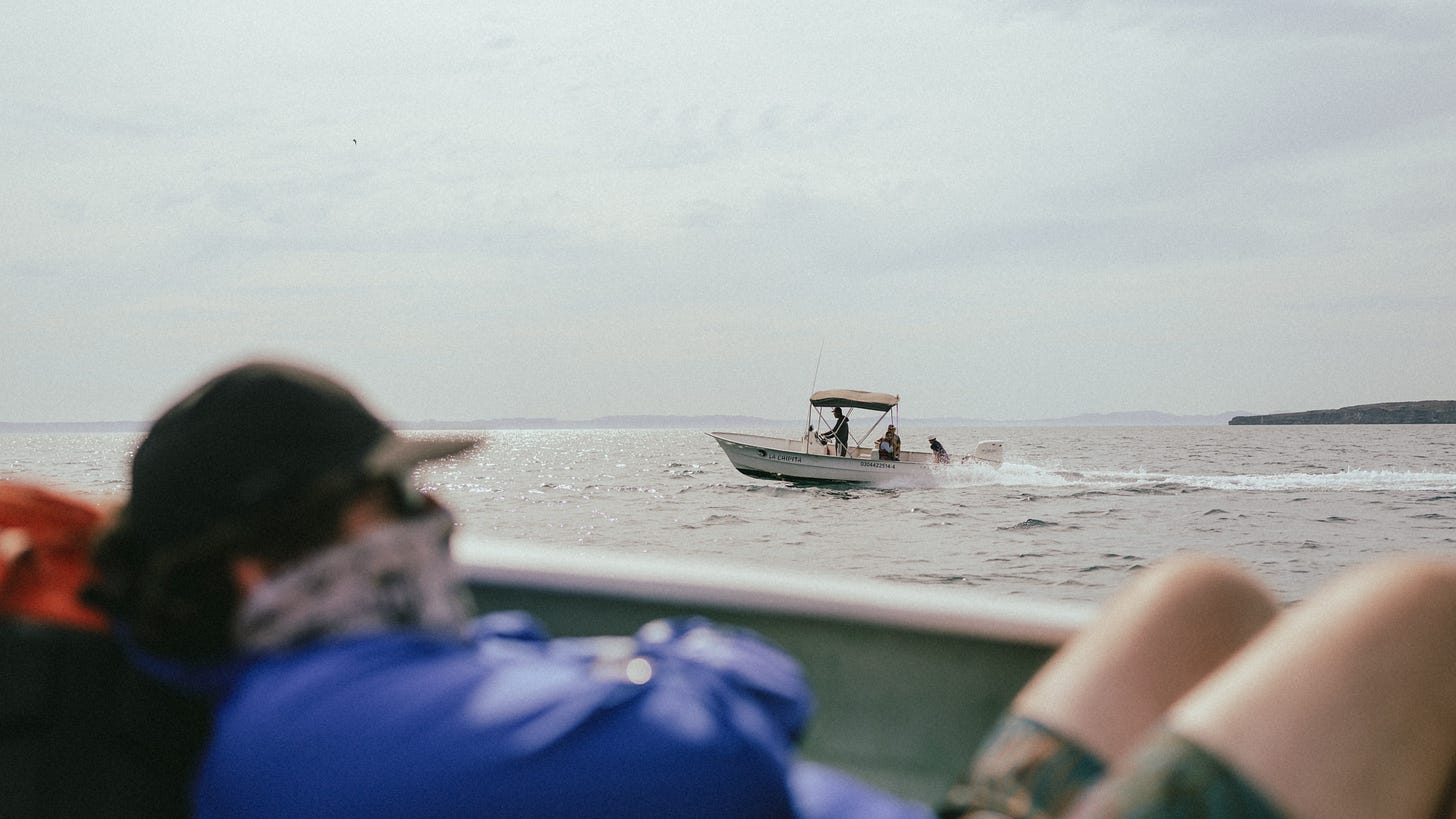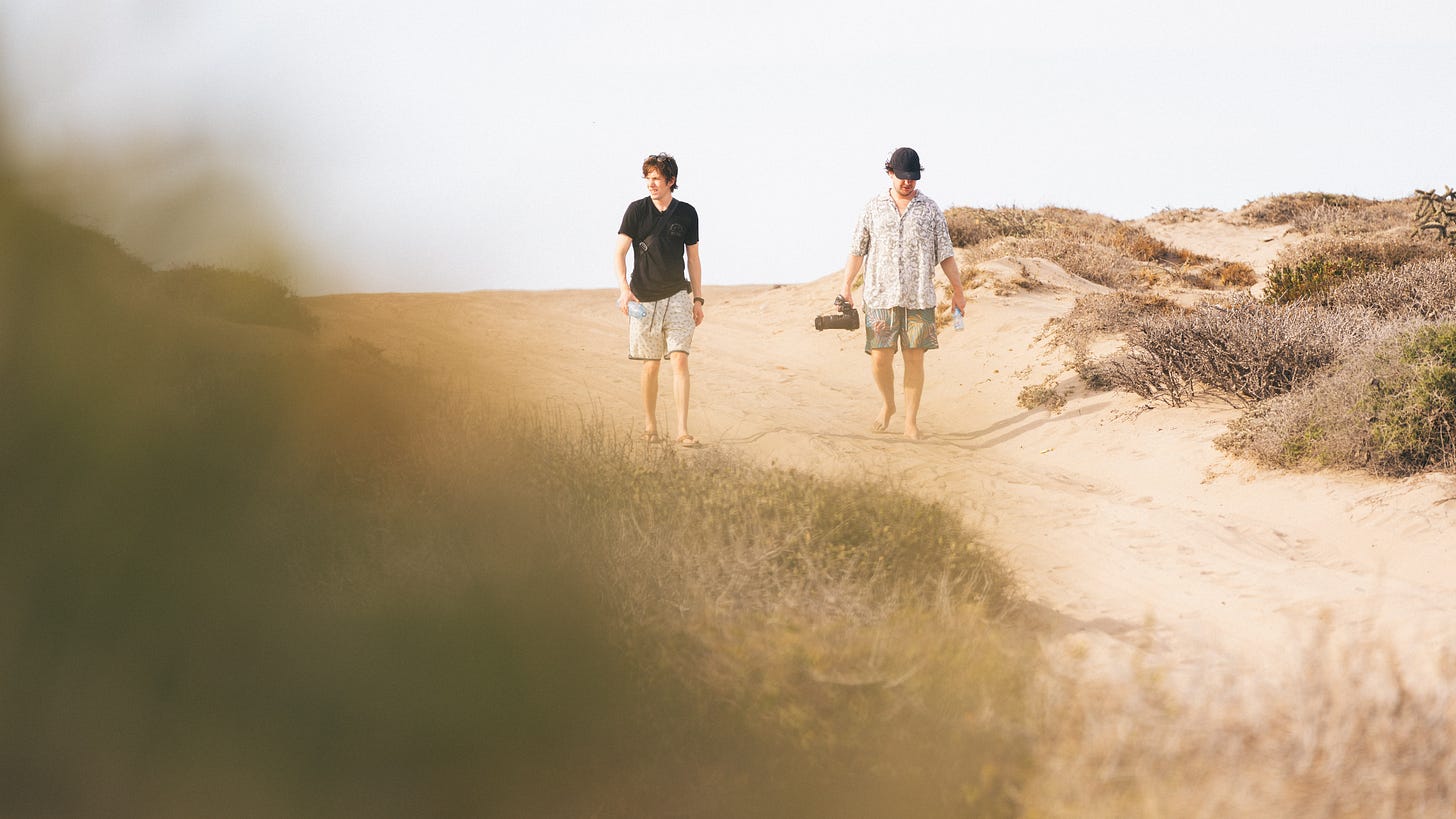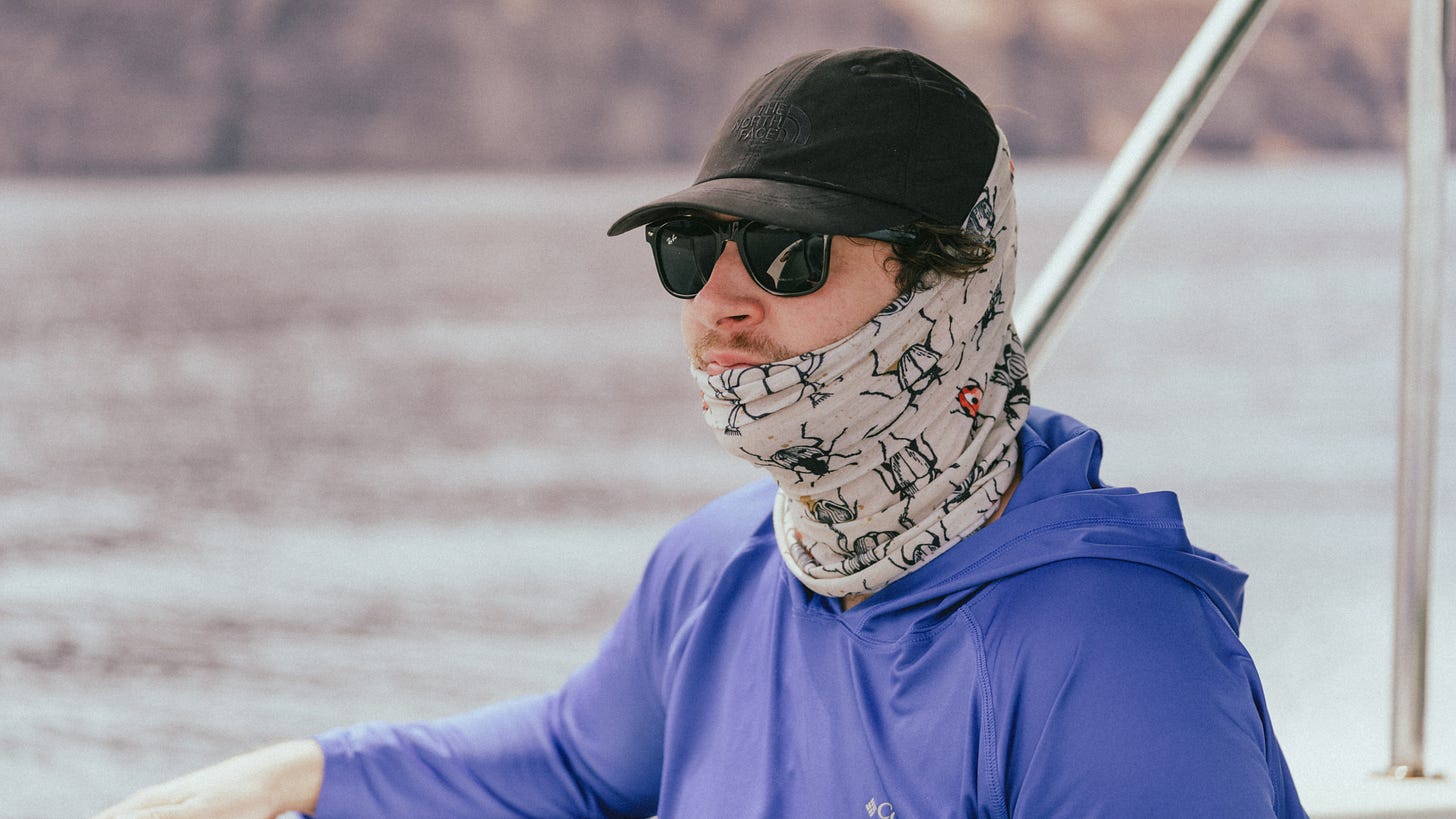Over the past week, I’ve been in Baja California Sur, Mexico, working on a short documentary film that encapsulates the miraculous nature of this incredible place. During this trip, we were focused on learning more about these species and understanding the human connection to the marine wildlife in Baja California.
This week, in the first installment of my story from Baja California Sur, I want to share a little bit about La Paz and my experience returning to Isla Espiritu Santo.

The Southern tip of Baja California Sur is a confluence of worlds, with the swelling waters of the Pacific meeting the warmer tides of the Gulf of California, sparking a cacophony of life.
This place is renowned for its marine wildlife, and has been aptly named the “World’s Aquarium”, by the famous marine biologist Jacques Cousteau.
I’ve previously worked in this region, living in the city of La Paz, the capital of Baja California Sur, as an intern and communications specialist for a sustainable seafood startup. During that time, I fell in love with Baja California and the incredible wildlife in the region. From the whale sharks that inhabit the bay of La Paz to the Mobula Rays that propel themselves out of the waters of the Gulf, there is an incredible array of marine diversity in this region.
It’s also an epicenter of conservation, and I’ve met so many individuals doing incredible work for the planet in this region. From researchers studying sharks in Cabo Pulmo to fisheries working to protect sea turtles from bycatch, the conservation community in this region is incredibly strong.
This diversity of marine life and passionate community of marine stewards is the exact reason I’ve been wanting to return to Baja California Sur. I believe this place is a beacon of light in marine conservation, and the more we can share the stories of the incredible people working tirelessly to protect this place, the more we can show the world that there is hope for our collective future.

Before this trip, it had been four years since I had last been in La Paz. For myself, our work to tell these conservation stories through this documentary was also influenced by my own personal journey. By returning to La Paz, I was returning to a part of the world that had taught me so much about life and influenced so much of who I have become as a conservation storyteller.
It’s hard to describe in words the feelings I feel when being around this place, and specifically spending time in the bay of La Paz. In all honesty, I’m still in the midst of my stint in Baja, and I’m sure it’ll take a few more weeks to process what I have experienced over the past few days.
For now, the best way to put it into context is to share a particular moment that I had five years ago while working in this region, and describe how that moment was at the forefront of my mind over this past week.
After a day cruising around the local beaches, on our second day in La Paz, we accompanied Alonso Tours on an expedition to Isla Espiritu Santo, a protected area that sits between the bay of La Paz and the Gulf of California. Famously known for its history of pearl diving, so much so that John Steinbeck based a novel on the island, Espiritu Santo has now become a symbol of Baja California Sur’s connection with the marine world.
We spent most of the day around this island, getting in the water with the Sea Lions, photographing blue footed boobies (birds), and having lunch on the relatively untouched beaches of the east side of the island.
For me, returning to the island felt a bit like you would if you accidently wandered off a trail on a hike and somehow found your way back to the trail. Being in the islands shadow again, I felt like I had found my way back to my own path.

Five years ago while I was still finishing my degree in Wildlife Biology, I visited the island for the first time. During that trip, we camped on the remote beaches for a couple of days, snorkeled the islands coves, climbed through its hills, and told stories under the stars.
In those moments, time stood still. Nothing else mattered except for the people camping with me and the island itself. It felt the same way I can only imagine astronauts may feel being in space. There was nowhere but the present and what was only a few days felt like a lifetime of memories.
On one of the days of the trip, I remember sitting on the boat coming back from snorkeling, watching the sunset as frigate birds flew alongside our wake. It was a simple moment. Friends were sitting alongside me. I was wet and cold from being in the ocean. The dry desert air was blowing across my face.
This moment lasted only a few seconds, maybe even a minute, but it was the most present I had ever felt in my entire life. For just a mere blimp of time, I felt alive. I was breathing and my heart was beating. I was a biological being living on this miraculous and beautiful planet.
That single moment has continued to sit a the forefront of my memory for over five years. In times of panic or hardship, I’ve often thought about it as a baseline of what life can feel like. A reminder that despite the incredible pressures of our modern society, when we distill life into the simplest of things - being a human existing in the world - it can truly be beautiful.
This past week, that memory was front in center in my mind. I kept thinking about how I would feel returning to this remarkable place that held such a special place in my head. Would it feel the same? Would I feel different? Am i different?
In truth, I’m not quite sure yet, but I do know that the calm and ease that came over me during our trip to the island this week was strikingly similar to the calm I felt five years ago. We were here with a different purpose this time, and I was here as a different person, but I still felt the same sense of compassion and understanding towards life.
It really made me think about the timelessness of the natural world and the thousands of years of evolution we have spent living alongside nature. In many ways, each and every one of us is a product of millions of moments spent in the wilderness, learning, growing, and understanding.
I’m not saying our conscious minds necessarily understand that connection, but I like to think our bodies and our souls remember. We rememeber the thousands of tiny little moments where we existed in cohabitation with nature.
I believe that when we get the chance to experience someplace as beautiful and miraculous as this island, those biological memories transcend the barries of time and flood back into our bodies and soul, reminding us that this is truly how we were always meant to be.
Maybe, just maybe, these moments are there to remind us that we are more at home, in the natural world, than we are anywhere else. A constant reminder that we are wild creatures on a wild planet, and that in itself, is a miracle.
I encourage you to share your own moments in nature like these and the ways they changed you as a person. If you haven’t had the opportunity to experience one yet, go out and find your own version of this island, and see what lessons nature has to offer.
I’ll be back next week with another excerpt from my time this past week in Baja, one that is a little less calming but equally as eye-opening. For now, let’s just say it involves the open ocean and some of its most famous predators.
🗞️ Story of the Week
This week, for our story of the week, I’m throwing it back a few years and sharing my own story from when I reported on the mobula ray migration for Earth Island Journal.
In this article, I spent a day with a few of the researchers from Mobula Conservation Project, a non-profit organizaton working to research and conserve mobula rays in the Gulf of California.
These rays are fascinating marine animals and reporting on them provided me with one of the most incredible experiences I’ve ever had in the natural world. I’d highly recommend taking the opportunity to snorkel or dive with them if you ever have the chance.
Check out the article here.
NOTE: For our membership community, The Naturalists, the mid-week newsletter which includes the Monthly Challenge, and a special announcement about an upcoming Human Nature event, will be coming this week. I do apologize for the delay. Stay tuned.
Thanks for being here, friends. See you in the next one.
With love,
Keegan





